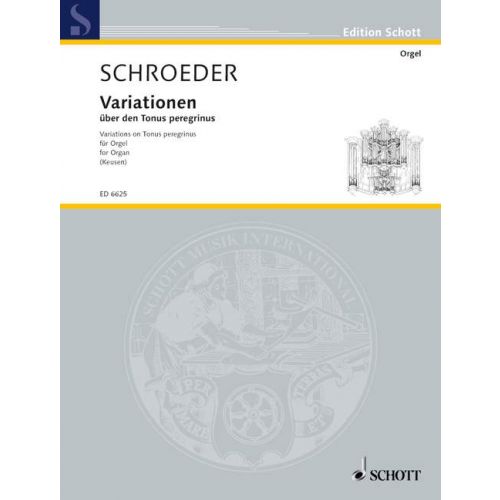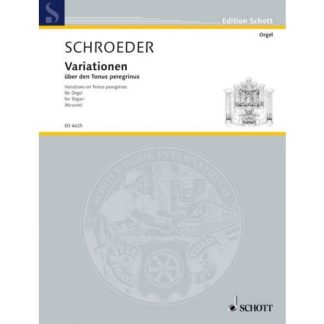Description
Hermann Schroeder (1904–1984) ranks among the major German organ composers of the 20th century, being an excellent organist himself. Many of his more than 100 organ works deal with themes of the Gregorian chorale which Schroeder appreciated very much. The chorale’s modal diatonicism which is freer and different than the later major-minor tonality establishes a perfect symbiosis with the free tonality of the contemporary composer. Among the church modes, the ‘tonus peregrinus’ is the most interesting because it has two alternating reciting tones and therefore does not fit into the common pattern of the eight church modes. Since it ‘modulates’, it is a stranger, a ‘peregrinus’, among the tones – and therefore of special interest to composers. It forms the basis of the old Gregorian Magnificat, Bach used it in his Magnificat, Mozart in the introit of his requiem. Schroeder used the tonus peregrinus to achieve interesting harmonic and tonal effects, thus creating a virtuoso cycle of ten effective and colourful variations. A rewarding piece for church services and concerts.

